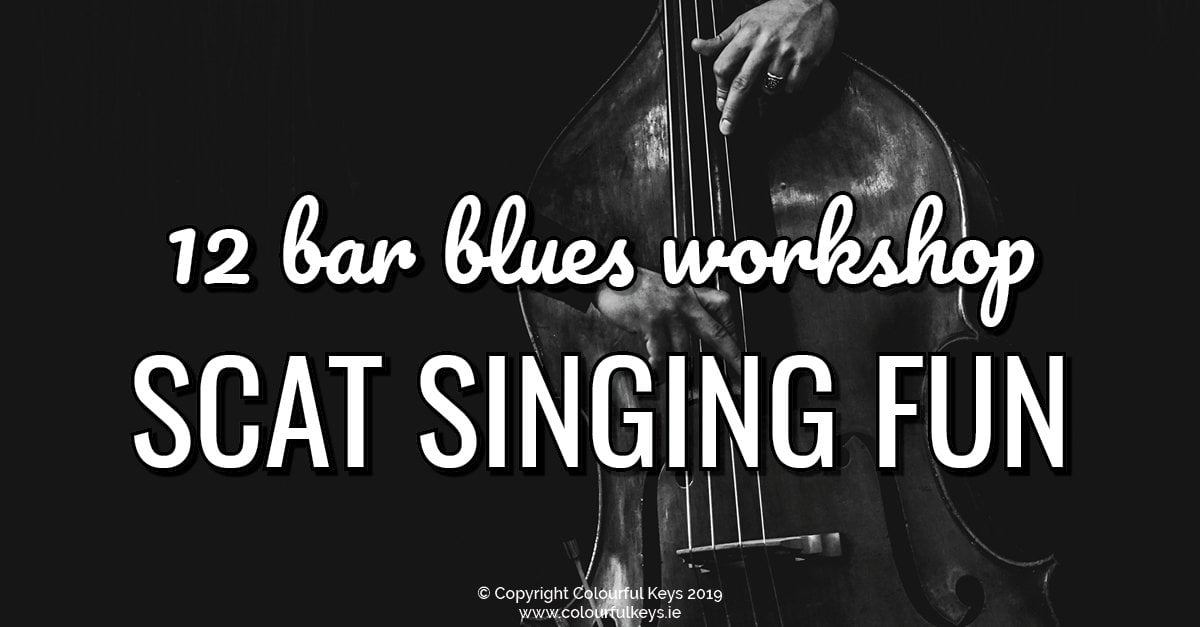One of the activities in my Meet the Blues workshop (which is coming out tomorrow for Vibrant Music Teaching members!) is a quick lesson in scat singing. I love this part of the workshop because it’s silly and fun; and because it teaches my students some valuable skills.

If you’re not familiar with the term “scat singing”, I’m sure you’ve heard it in action. Scat singing is when jazz singers sing those sort of nonsense syllables like “scat-bwee-ba” or “scoo-by-doo-by-bop-shoowop!”
Here’s the wonderful Ella Fitzgerald to show us how it’s done. 🙂
Every singer has their own style of course but the basic idea is to imitate the sounds of instruments in order to take a solo in the same way as a saxophone or trumpet would.
In the Meet the Blues workshop, we discuss the concept or scat singing and explore the blues scale while trying to imitate different jazz instruments. But why?
Blues Scale
Later on in the Meet the Blues workshop, the students will be coming up with their own Piano Practice Blues lyrics and composing a blues melody for their song.
This type of singing exercises is a great way for them to get familiar with the blues scale, to get it in their ear so that they can compose more intuitively.
Jazz Instruments & Timbre
At the start of our scat singing session, I get the students to suggest different common jazz instruments that we will try to imitate. This helps them to think about jazz bands and become familiar with different musical instruments.
As we explore syllables we can use to imitate these instruments they also think about their timbre (without knowing that’s what they’re doing) in a way that makes sense for even my youngest students.
Expression
Scat singing cannot be done without feeling! If you’re trying to sound like a trumpet it simply won’t do to sing in a robotic voice.
Through scat singing, students can find more expression and feeling for the music. This can make its way into their improvisation at the piano and you can reference this when talking about phrasing and expression in your students’ pieces too.
Singing!
One of the regular questions I hear from piano teachers when it comes to singing in piano lessons is how to deal with shy singers. What about the students who just refuse or who sing in a whisper?
Scat singing won’t solve all these problems of course but it can help many shy singers to break out of their shells. Because of the silliness of the syllables, many will forget that they “don’t sing” and just go for it!
Have you tried scat singing in your piano studio?
I’d love to hear about your experiences and other benefits you’ve found! Let me know how you get on if you try this out.
